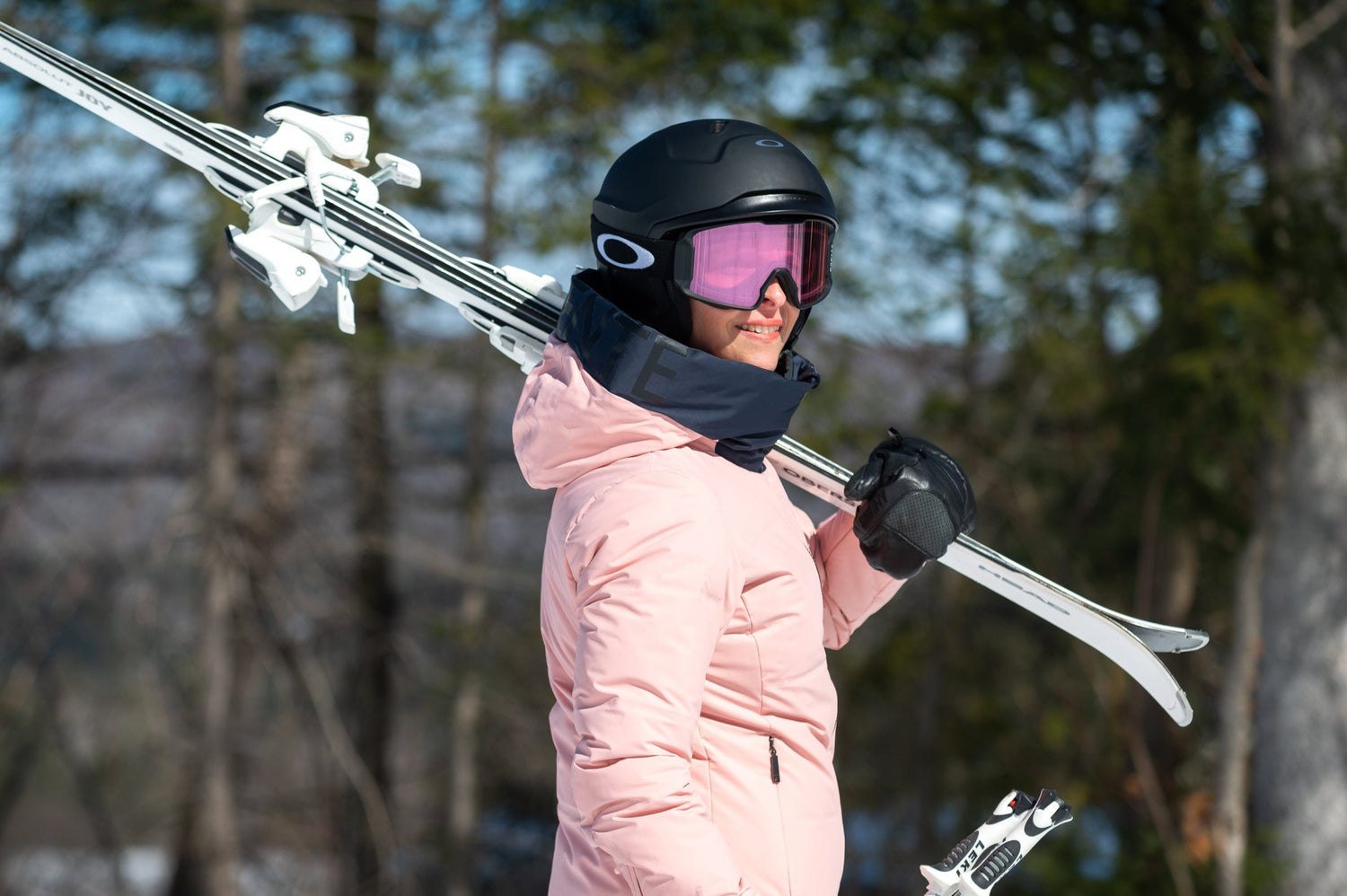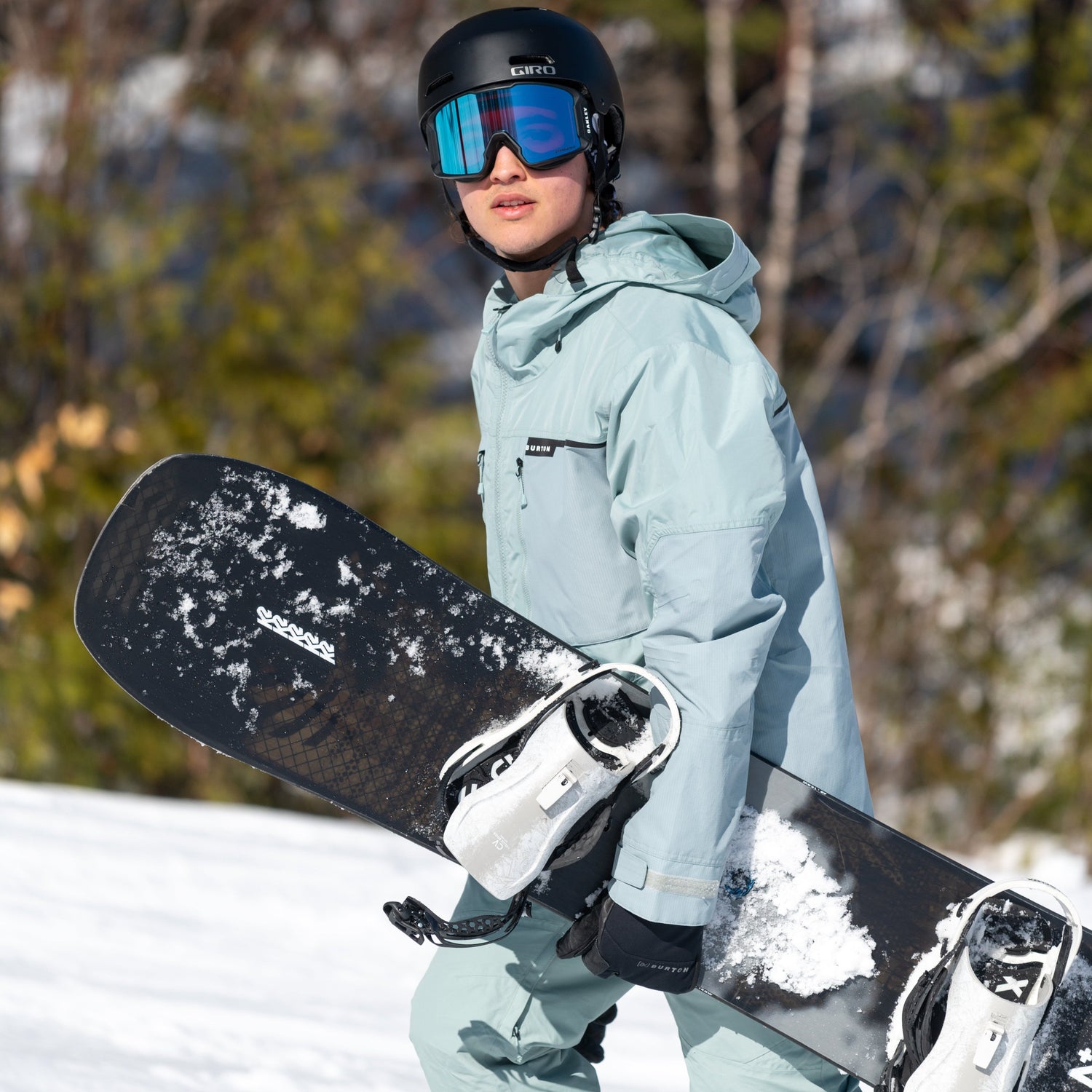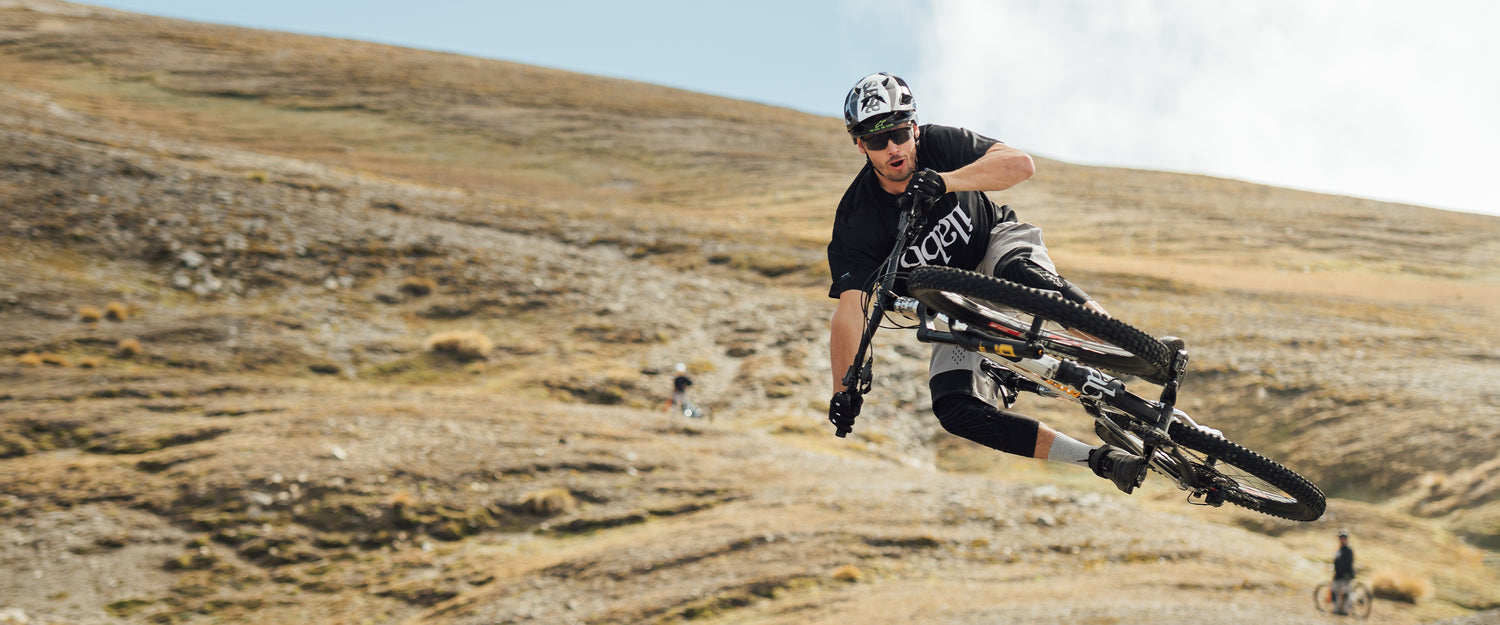1. Liner Shorts and Bib Shorts
Why wear liner shorts?
Sitting on a saddle for a few hours can be a bit painful! Liner shorts’ role is to provide comfort, support and padding. Whether you’re wearing liner or bib shorts, both have a denser section of fabric sewn or glued to the crotch area called a chamois.
For mountain biking, some riders prefer thinner, lighter bike shorts—usually called liner shorts—that look more like underwear and have a chamois pad that’s less dense than those on road bike shorts. They make this choice because they often change positions on their bikes on both uphills and downhills, so they feel fewer vibrations on the saddle. Liner shorts are appreciated in the bike park or when riding shorter distances. Ultimately, it’s a matter of the individual cyclist’s comfort and preference.
Chamois
Chamois reduces vibrations for the best possible comfort on your mountain bike saddle. Since you wear it without underwear, it’s important to find the shorts with the best fit.
If you want to learn more about bib shorts and chamois, our article How to Choose the Best Bike Shorts may interest you.
What to Consider When Buying Men’s Liner Shorts
- Distance that will be travelled most often on your bike to determine the right liner shorts with chamois adapted to your needs;
- Seams;
- Chamois density;
- Their grip on your thighs so the shorts stay in place when you’re pedalling;
- Waist band;
- Overall comfort;
- Breathability.
Why buy bib shorts?
For mountain biking, the choice between liner shorts or bib shorts (shorts with suspenders) is really a matter of comfort. Bibs offer excellent support and stay in place well thanks to the shoulder straps. Their only flaw is that they’re less convenient if you have to go to the bathroom!


2. Mountain Bike Jersey
Why buy a mountain bike jersey?
Well, here the answer is pretty straightforward if it’s just a question of wearing something! However, mountain bike jerseys are designed with synthetic fibers or merino wool that have specific properties for engaging in high-intensity physical activity.
Bike Jersey Types
To be able to adapt to different temperatures, you should have at least one long-sleeved and one short-sleeved bike jersey.
-
Long Sleeves
Long-sleeved jerseys are ideal for the first outings at the beginning of the season, cool evenings or mornings, and fall. Plus, if you enjoy spending time at the bike park, a long-sleeved bike jersey is perfect—the climbs are done in a ski lift, so they’re less strenuous, and the downhills require more protection.
-
Short Sleeves
Short-sleeved jerseys can be worn at any time, especially when the mercury is rising. In addition, you can easily wear it under a long-sleeved short and manage your layers based on your exertion.
Advantages of Wearing a Mountain Bike Jersey
- Designed with breathable, quick-drying materials;
- Designed to be comfortable in action thanks to their sometimes longer and looser cut on the back;
- Can be designed with a glasses wipe;
- Fabric that can be more resistant.
3. Mountain Bike Shirts
Bike shirts have slowly won over mountain bikers’ hearts. These lightweight, breathable, casual shirts can be worn on the trails and at post-ride tailgates. They’re versatile, comfortable and uniquely stylish.

4. Mountain Bike Shorts
Why wear mountain bike shorts?
Unlike those for road biking, mountain bike shorts are worn over liner shorts. They protect your liner shorts from tears and your lower body during crashes. Plus, the pockets can be practical for carrying some small, essential items with you. The cut of men’s mountain bike shorts covers your thighs and knee pads well.
Shorts’ Technical Fabrics
Mountain bike shorts are made with moisture-wicking synthetic fibers for maximum comfort. Plus, some models are designed with abrasion-resistant fabrics that make them more durable and resistant during falls.
What to Consider When Buying Men’s Bike Shorts
- Fabric thickness;
- Type of fabric (stain resistant, abrasion resistant, breathable, etc.);
- Zippered pockets;
- Adjustable waist;
- Length and cut;
- Comfort;
- Ventilation: some shorts are equipped with small laser-cut perforations.

5. Mountain Bike Pants
Why wear mountain bike pants?
Mountain bike pants are super handy in the early and late season. Plus, if you’re more of a downhiller, pants are a must. They protect your lower body from scratches and dirt when you crash.
What to Consider When Buying Men’s Mountain Biking Pants
- Type of fabric;
- Its durability if you’re a downhiller;
- The cut: articulated knees for comfort in a seated position;
- Ventilation: some pants have small laser-cut perforations;
- Comfort;
- Narrower leg to not be bulky.

6. Mountain Bike Socks
They’re the little finishing touch for your style! Bike socks are often a kind of signature. Colourful mountain bike socks are designed to be breathable—so no cotton!—and offer good support in the bike shoe.
7. Mountain Bike Gloves
Bike gloves are optional, but for many cyclists, they’re an essential. Gloves protect your hands from blisters, and some models protect your knuckles.
In addition, bike glove palms give you a better hold on the grips. Since mountain biking is a high-intensity sport, your hands can get sweaty fast. This accessory helps you hang on to your grips. They can also keep your hands warm during the season’s first and last outings.
What to Consider When Buying Bike Gloves
- Clarino® or other technology that is compatible with touch screens;
- Palm grip;
- Knuckle protection if needed;
- Thickness of glove fabric based on temperature;
- Ventilation if you sweat a lot;
- Wrist size and adjustability;
- Comfort.
Now that your wardrobe is complete, it’s time to hit the mountain bike trails. Need some choice destinations to visit this summer? Check out our mountain bike destinations and our favorite bike parks!



